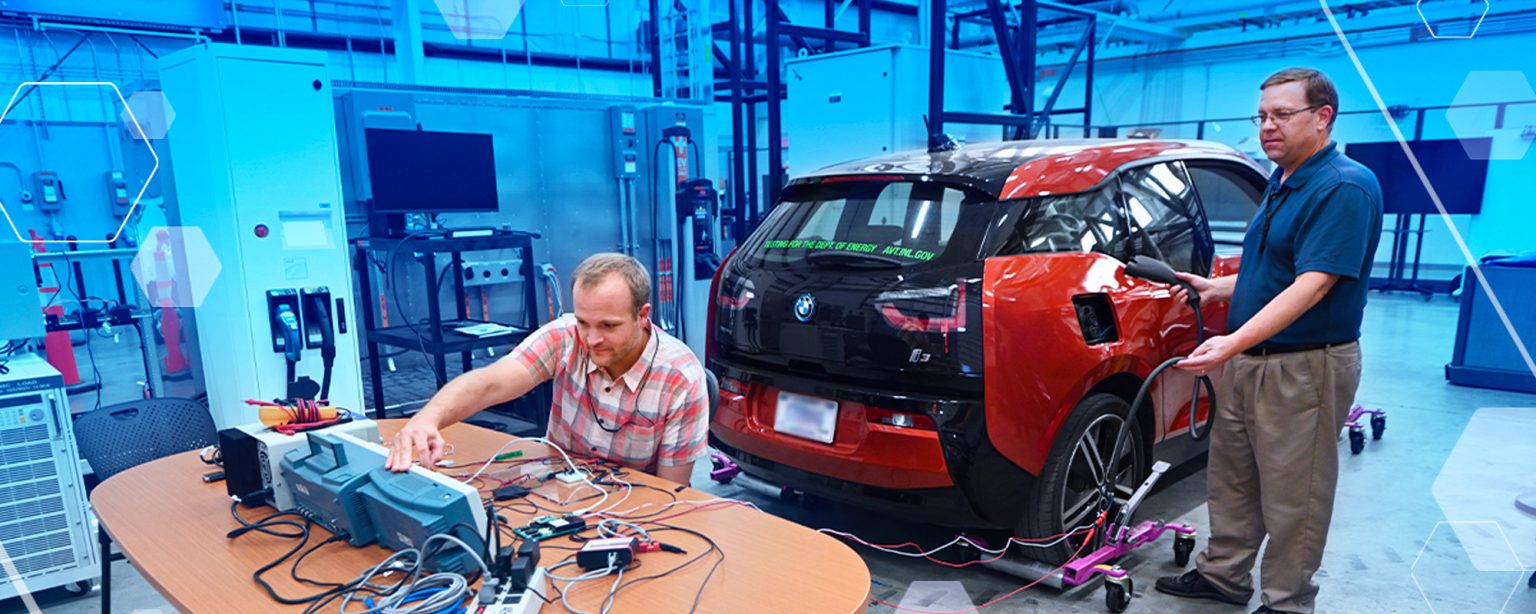The White House recently announced a plan to respond to the Bipartisan Infrastructure Law’s call to make electric vehicle charging more accessible.
Experts across the federal government have identified charging as one of the biggest challenges to meet growing transportation electrification demand. New recommendations provided by the Joint Office of Energy and Transportation ensure that, as electric vehicle charging infrastructure is deployed nationwide, it will be safe and accessible.
Idaho National Laboratory’s John Smart, Jean Chu and Torrey Lyons served on the Joint Office of Energy and Transportation team that made these standards for safety and accessibility possible.
INL was asked to participate because of its vast expertise in both charging cybersecurity and charger siting. Over the past 20 years, the lab has collected extensive data on how to make EV chargers more reliable. This data has proven invaluable as the joint office works to deploy these minimum standards and requirements.
“This is the first time the federal government has established a national standard for electric vehicle charging infrastructure,” Smart said. “The joint office team pooled our technical expertise to help Federal Highway Administration (FHWA) establish regulations we perceive as necessary to help the industry grow and achieve a national charging network that is convenient, affordable, reliable and equitable. We also worked to ensure that these standards do not stifle innovation.”
“As we work with states to plan and implement a national charging network, we kept the principles of equity and environmental justice in mind,” said Lyons. “As evidenced by the Justice40 Initiative, a key Biden administration goal is to ensure that the benefits of the national charging network are enjoyed by those who have been historically left behind by the transportation system.”
In addition to these minimum standards and requirements, the joint office worked with FHWA to issue another significant deliverable this week. This second effort provides clarification on how Buy America requirements apply to charging stations funded by the Department of Transportation. The document released by FHWA indicates that by July 2024, at least 55% of the contents needed to assemble new vehicle chargers must be manufactured in the United States.
“This guidance document will drive billions of dollars in investment throughout the nation,” Chu said. “Ideally, it will facilitate development of a domestic supply chain for electric vehicle charging equipment, positioning the United States as a continued leader in the world’s transition to electric transportation.”
“Serving on the joint office team has been a very rewarding experience,” said Smart. “Although we all come from different organizations and backgrounds, we have banded together as a single team for this once-in-a-lifetime opportunity. We are thrilled to work with federal and state government agencies and the private sector to establish a national charging network that will make it possible for everyone to ride and drive electric.”





